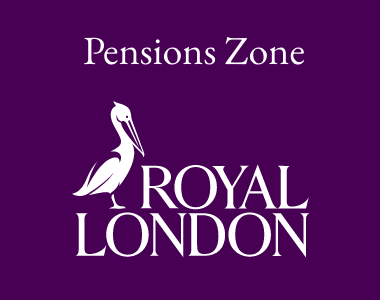Business Property Relief can be a powerful estate planning tool, says Paul Latham, head of Tax Products, Octopus Investments.
First published in the July/August 2019 issue of professional Paraplanner.
Inheritance tax receipts reached a record £5.4 billion last tax year.[1]With the rise in asset values, those with large estates will continue to be affected.
But there are many opportunities for clients to do good things with their money that the government supports, by offering relief from inheritance tax. The relief rewards investors for taking more risk with their wealth, investing in unquoted unlisted and AIM listed smaller businesses, which support the growth of the UK economy.
Investing in the shares of companies that qualify for Business Property Relief (BPR) is one such opportunity. Such shares are zero-rated for inheritance tax purposes when held for at least two years and upon death. The tax relief exists to incentivise investors to take on the risk of investing in growing businesses.
Since investing in BPR-qualifying businesses does involve taking on significant risk, it won’t be suitable for every client. But for a client who is comfortable with the risks, BPR can be an extremely powerful estate planning tool.
Here are three good reasons why:
Reason 1: Speed and simplicity
A key advantage of BPR is that it can achieve its aim in a shorter time frame than other strategies, while often being simpler to put in place.
Making gifts or settling assets into trust will typically take seven years to become completely free from inheritance tax. This can be a long time for a client to wait to know that they won’t be leaving a liability behind. None of us can reasonably know how long we will live and this consideration becomes especially difficult for clients in later life.
BPR-qualifying investments, on the other hand, can be passed to beneficiaries free from inheritance tax when they are held for just two years or more and at death. Although clients need to remember that tax rules may change and that the relief relies on the companies invested in maintaining their qualifying status.
While some estate planning strategies can be complicated, investing in BPR-qualifying shares can be much simpler than setting up a trust or using life insurance. There are no complex legal structures, and there may not be a requirement for client underwriting or medical questionnaires.
Reason 2: Access and control
One of the biggest barriers to estate planning is that a client often doesn’t want to lose control of or access to their wealth in their lifetime. When making lifetime gifts, for example, a client must lose control of the gifted asset to reduce an inheritance tax liability.
It can be difficult for a client to know how much wealth they need to retain to ensure they have a similar quality of life. A client might, for example, want to retain enough wealth to be able to fund costs that might unexpectedly arise in the future, for example if they need to pay for care.
A significant advantage of undertaking estate planning by making BPR-qualifying investments is that inheritance tax relief is given on the investment itself, so it can stay in a client’s name during their lifetime, and they retain access to it. This means, subject to liquidity, that they could sell some or all of their shares if they needed to. Although you need to recognise that it can be harder to sell shares in BPR-qualifying companies than those listed on the main market of the London Stock Exchange.
Reason 3: Some BPR-qualifying investments can be held in an ISA
Since clients usually like to retain funds within their ISA for as long as possible, being able to reduce an inheritance tax liability while retaining ISA money is really powerful.
When using traditional approaches to inheritance tax planning, such as making a lifetime gift, a client would need to liquidate their ISA in order to pass the assets contained within it to a beneficiary and the benefits of the wrapper would be lost.
Understandably, many clients don’t want to do this. They may well have an emotional attachment to value accrued within their ISA, having spent a lifetime accumulating it.
But BPR-qualifying AIM shares can be invested in through an ISA. This means a client who is happy to take more investment risk with their ISA could transfer some or all of their ISA pot into such a qualifying portfolio. This would retain the lifetime tax benefits of their ISA wrapper and enable the portfolio to be left to loved ones free of inheritance tax as long as it has been held for at least two years when they pass away.
Key risks to bear in mind
Remember that BPR-qualifying investments place capital at risk. The value of an investment, and any income from it, can fall or rise. Investors may not get back the full amount they invest.
Tax treatment depends on personal circumstances and may change in the future. Tax reliefs depend on the portfolio companies maintaining their qualifying status. Inheritance tax relief is assessed on a case-by-case basis when a claim is made.
The shares of unquoted companies and those listed on AIM could fall or rise in value more than shares listed on the main market of the London Stock Exchange. They may also be harder to sell.
[1]Source: HMRC, April 2019 – https://assets.publishing.service.gov.uk/government/uploads/system/uploads/attachment_data/file/796405/Mar19_Receipts_NS_Bulletin_Final.pdf






























